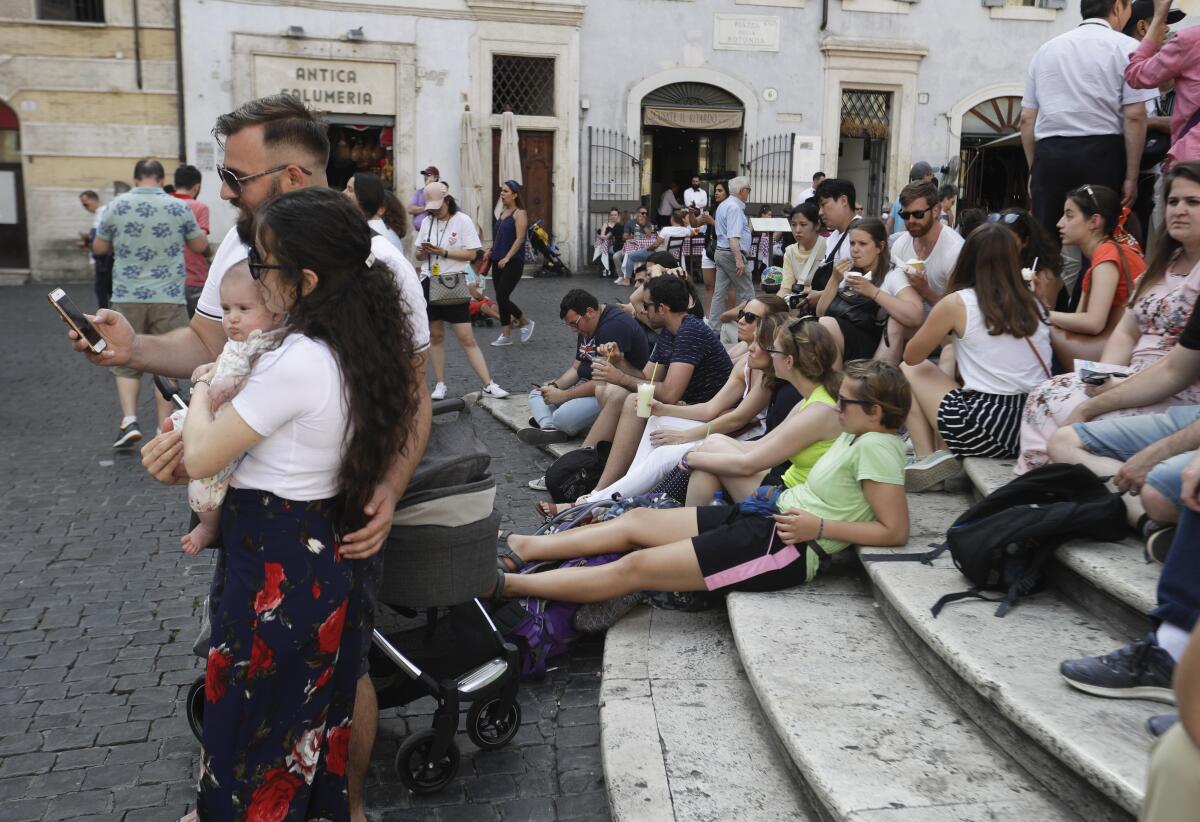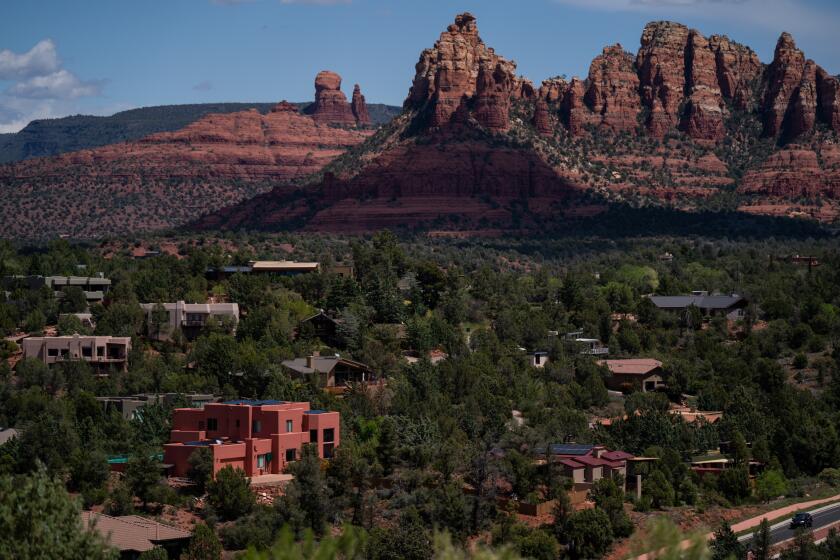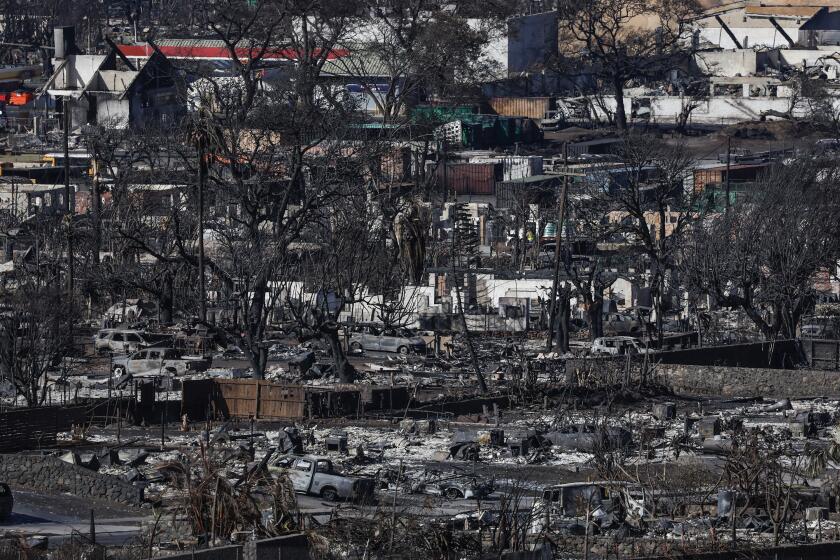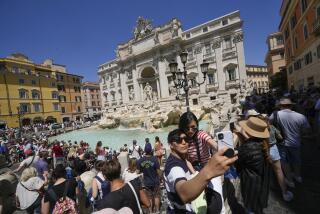Commentary: Tourists have made Europe a nightmare. I was part of the problem but won’t be again

- Share via
Ten years ago, in an opinion article for the Los Angeles Times, Rick Steves advised readers to swallow their fears of terrorism and disease, “just get on the plane” and go see the world. And who am I to disagree with a beloved travel writer and fellow Norwegian American?
But after returning from a three-week trip seeing family and sites in Norway and Italy, my advice is a little different: Maybe don’t get on that plane, especially if you, like me, are concerned that tourists are ruining the world.
Day trippers from California, traffic jams and lack of housing for workers are fueling local fights over tourism and marketing.
My advice has nothing to do with conflict or pestilence. Or perhaps it does, because from what I saw, the hordes of humans who burn tons of jet fuel flying to faraway places so they can trample on sites known for their beauty and history might qualify as pests.
The consequences of overtourism are well known, especially in the hapless places that are its targets: Cities built in a long-ago era or natural wonders become victims of their own charm, drawing far more people than they can handle. Pristine wildlife areas degrade, the markets and butcher shops that sustained locals give way to souvenir stores, and residents get crowded out as their homes are converted to short-term rentals. Increasingly, there is no offseason: Since pandemic restrictions were lifted, October crowds in European hotspots are what July was like 10 or 20 years ago, and July today is … apocalyptic.
Maui has long depended on tourism. After devastating fires, there’s a chance to set a new economic course for the island that incorporates the interests of native Hawaiians.
Thankfully, overtourism can essentially fix itself. Being part of the problem, as I just was during a trip to Norway and Italy with my family, is such a miserable, money-sucking experience that it stirs the resolve never to do it again.
Take Rome’s Spanish Steps, where I saw la dolce vita clash with the tourist police state. There, the gorgeous, operatic wailings of Italian street performers were intermittently pierced by the whistling from street cops scolding anyone who dared to sit down on a blisteringly hot day. The crowds in Rome have become so bad, so incompatible with preserving structures that have survived hundreds and even thousands of years of human use, that it’s now illegal to sit down in certain places.
Perhaps this newfound hostility to loitering accrues to visitors’ benefit. The crush of people streaming toward sites like the Spanish Steps, and the harsh vigilance of guards, will ensure that most anyone who ventures there will want to leave as quickly as possible.
This was also sadly true of Venice, arguably Europe’s Exhibit A against overtourism. If there was a sector of the economy devoted to something other than tourism, I didn’t notice.
The resident population of Venice’s historic core has fallen below 50,000, a level not seen since the Middle Ages. Much of the housing that once served locals is now rented out to visitors like me. Nothing screams old-world authenticity like the brightly dressed hordes wheeling luggage down the street or holding the most unnatural Instagram poses so they can show off their amazing lives.
Venice is finally pushing back. Last April, day-trippers to the city started having to pay a 5-euro entry fee, and large cruise ships have been banned from entering the Venice lagoon. Similarly, in Norway, Bergen (which is really the world’s most perfect city) caps cruise ship disembarkments to 8,000 passengers a day — and even under that limit, Bergen’s historic waterfront is easily overcrowded.
The good news is, for a taste of the post-pandemic travel experience, you don’t have to fly to Europe. Just drive down the 5 to Disneyland on a summer day, spend $800 on tickets for your family and stand around in the sun with a few thousand impatient strangers.
There, in Tomorrowland, you will perform the mental gymnastics I did at the Vatican: Tell yourself that this is beautiful and fun, damn it, because we paid for it, no matter the truth laid bare by your whining children, your burning skin and the suffocating claustrophobia while standing outside.
Next time I muster another trip, Norway could be on the table, since most of my late mother’s family is there. But as for sightseeing and serenity, nothing beats the spots known to locals here in California’s own mountains and deserts. Find me there.
More to Read
A cure for the common opinion
Get thought-provoking perspectives with our weekly newsletter.
You may occasionally receive promotional content from the Los Angeles Times.













